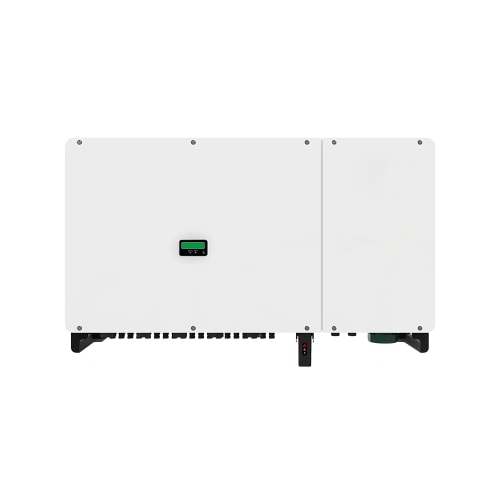NEWS
Welcome to My Blog!
Before we dive into the content, if you’re interested in our products or have any questions, please feel free to visit our Contact Us page on the website. Our team is ready to assist you with inquiries, orders, or any support you may need.
Now, let’s get started on our journey together. I hope you find the content here insightful, engaging, and valuable.
Table of Contents
As more homeowners turn to renewable energy sources, whole house solar inverters have become an essential part of modern solar power systems. These devices are the backbone of solar energy systems, converting DC power from solar panels into usable AC power to run all the electrical appliances in your home. This guide will help you understand what a whole house solar inverter is, how it works, and why it’s a smart investment for your home.
What is a Whole House Solar Inverter?

A whole house solar inverter is a specialized device that converts the direct current (DC) electricity generated by solar panels into alternating current (AC) electricity, which is used by most household appliances. Without an inverter, the energy produced by solar panels cannot be used directly in your home.
Definition of a Solar Inverter
Whole house solar inverters are designed to handle the power requirements of an entire home. They are usually more robust than inverters used for smaller solar systems, capable of managing the higher energy needs of larger households.
How Does a Solar Inverter Work?
Solar panels capture sunlight and generate DC electricity. This electricity is routed to the inverter, which then converts it into AC power. The inverter also manages the flow of electricity, ensuring that the energy is properly distributed to power appliances, lights, and other systems in your home.
Differences Between Whole House Inverters and Standard Inverters
A whole house inverter typically has a higher power rating than standard inverters because it is designed to handle the energy needs of an entire household, rather than just a small portion of it. It is also designed for continuous use and to provide a stable flow of electricity.
Why Should You Consider a Whole House Solar Inverter?
Whole house solar inverters offer numerous benefits that make them an attractive option for homeowners looking to reduce their carbon footprint and energy bills.
Benefits of Using a Whole House Solar Inverter
- Energy Independence: A whole house inverter allows you to generate and use your own electricity, reducing dependence on the grid.
- Cost Savings: By using solar energy, homeowners can significantly reduce their electricity bills.
- Eco-Friendly: Solar energy is a clean, renewable resource, helping to lower your carbon footprint and contribute to sustainability.
- Increased Home Value: Homes with solar power systems are often valued higher due to the long-term cost savings.
How Whole House Solar Inverters Improve Energy Efficiency
Whole house solar inverters help maximize the efficiency of your solar energy system. By converting and distributing power efficiently, they ensure that your home is powered with clean energy while minimizing energy waste.
Environmental and Financial Benefits
Switching to solar energy can drastically reduce your utility costs and lower your environmental impact. Many homeowners experience a return on investment (ROI) within 5 to 10 years, depending on system size, local energy prices, and available incentives.
How to Choose the Right Whole House Solar Inverter for Your Home

Choosing the right solar inverter involves considering several factors to ensure it meets the energy demands of your household.
Factors to Consider When Selecting a Solar Inverter
- Size and Capacity: The inverter should be appropriately sized to handle your home’s energy consumption. A general rule is that your inverter should have a power rating that meets or exceeds the output of your solar panel system.
- Compatibility with Solar Panels: Ensure the inverter is compatible with the type of solar panels you have or plan to install.
- Efficiency Ratings: Higher efficiency means more of the energy produced by your solar panels is usable, so look for inverters with a high efficiency rating (preferably 98% or higher).
- Warranty and Support: A good warranty ensures long-term reliability. Most inverters come with warranties ranging from 5 to 12 years.
How Much Does a Whole House Solar Inverter Cost?
The cost of a whole house solar inverter depends on several factors, including the inverter’s size, features, and brand.
Average Price Range for Whole House Solar Inverters
On average, a solar inverter costs between $1,000 to $3,000. The price can vary depending on the inverter’s capacity and the technology used.
Cost Breakdown: Inverter, Installation, and Maintenance
The total cost includes not only the inverter itself but also the installation and maintenance costs. Installation can range from $1,000 to $3,000, depending on the complexity of the system and local labor rates. Regular maintenance, although minimal, may incur additional costs for inspections and servicing.
Factors Affecting the Price of Whole House Solar Inverters
- Inverter Type (String Inverter vs. Microinverter): Microinverters tend to be more expensive but offer more granular control over each solar panel.
- Installation Complexity: The complexity of installation can affect the overall cost, particularly in homes with older electrical systems.
- Additional Costs: Some systems may include energy storage, which can significantly increase the cost.
How to Install a Whole House Solar Inverter
The installation of a whole house solar inverter requires a professional installer who understands electrical systems and solar technology.
Step-by-Step Guide to Installing a Whole House Solar Inverter
- Site Assessment: A professional installer will assess your home to determine the ideal location for the inverter.
- Installation of Solar Panels: Solar panels will be installed on your roof, connected to the inverter.
- Wiring and Electrical Connection: The inverter will be connected to your home’s electrical system, ensuring the proper flow of electricity.
- Testing and Configuration: The system will be tested and calibrated to ensure optimal performance.
Common Installation Challenges and Solutions
- Roof Space and Orientation: Insufficient space or poor roof orientation can affect the efficiency of your solar panels. This can be mitigated by selecting the right solar panel type and positioning.
- Electrical Upgrades: Older homes may require electrical upgrades to accommodate the inverter’s power requirements.
Troubleshooting Common Problems with Whole House Solar Inverters

Like all technology, whole house solar inverters may face occasional issues.
How to Diagnose and Fix Inverter Issues
- Inverter Not Turning On: Check if the inverter has any error codes or warning lights. Ensure that the system is properly connected and that there is power from the solar panels.
- Power Output Is Low: Inspect the solar panels for dirt or shading and ensure the inverter is sized correctly for your home.
Preventive Maintenance Tips for Your Solar Inverter
Regularly clean the inverter and panels, monitor system performance, and schedule periodic inspections to ensure everything is functioning optimally.
Conclusion
Whole house solar inverters are a smart investment for homeowners who want to reduce their energy bills, increase energy independence, and contribute to a greener planet. By carefully selecting the right inverter and considering your home’s energy needs, you can make a significant impact on both your wallet and the environment. Whether you’re looking to install solar panels for the first time or upgrade your current system, a whole house solar inverter is an essential component of a modern solar solution.
FAQ
What is a whole house solar inverter?
A whole house solar inverter is a device that converts the DC electricity generated by solar panels into AC electricity, which is used to power your home’s appliances and electrical systems.
How does a whole house solar inverter work?
It works by taking the DC power produced by solar panels and converting it into AC power. The inverter ensures that energy is distributed evenly throughout the home, allowing all appliances to run on solar energy.
Why should I use a whole house solar inverter instead of a standard inverter?
Whole house solar inverters are designed to handle higher energy outputs, making them suitable for powering an entire home. They offer better efficiency and are optimized for larger systems, unlike standard inverters which may be used for smaller setups.
How much does a whole house solar inverter cost?
The cost typically ranges from $1,000 to $3,000, depending on the inverter’s size, brand, and additional features. Installation and maintenance costs are additional.
How long does a whole house solar inverter last?
A whole house solar inverter usually lasts between 10 to 25 years, depending on the quality, brand, and level of maintenance. Regular inspections can help extend its lifespan.
Ready to Power Your Home with Solar Energy?
Investing in a whole house solar inverter can drastically reduce your energy bills and help you live more sustainably. If you’re ready to make the switch to solar, contact us today for expert advice, personalized recommendations, and professional installation services. Let’s take the first step toward a greener, more cost-effective future!
Get in touch now and start your solar journey!

